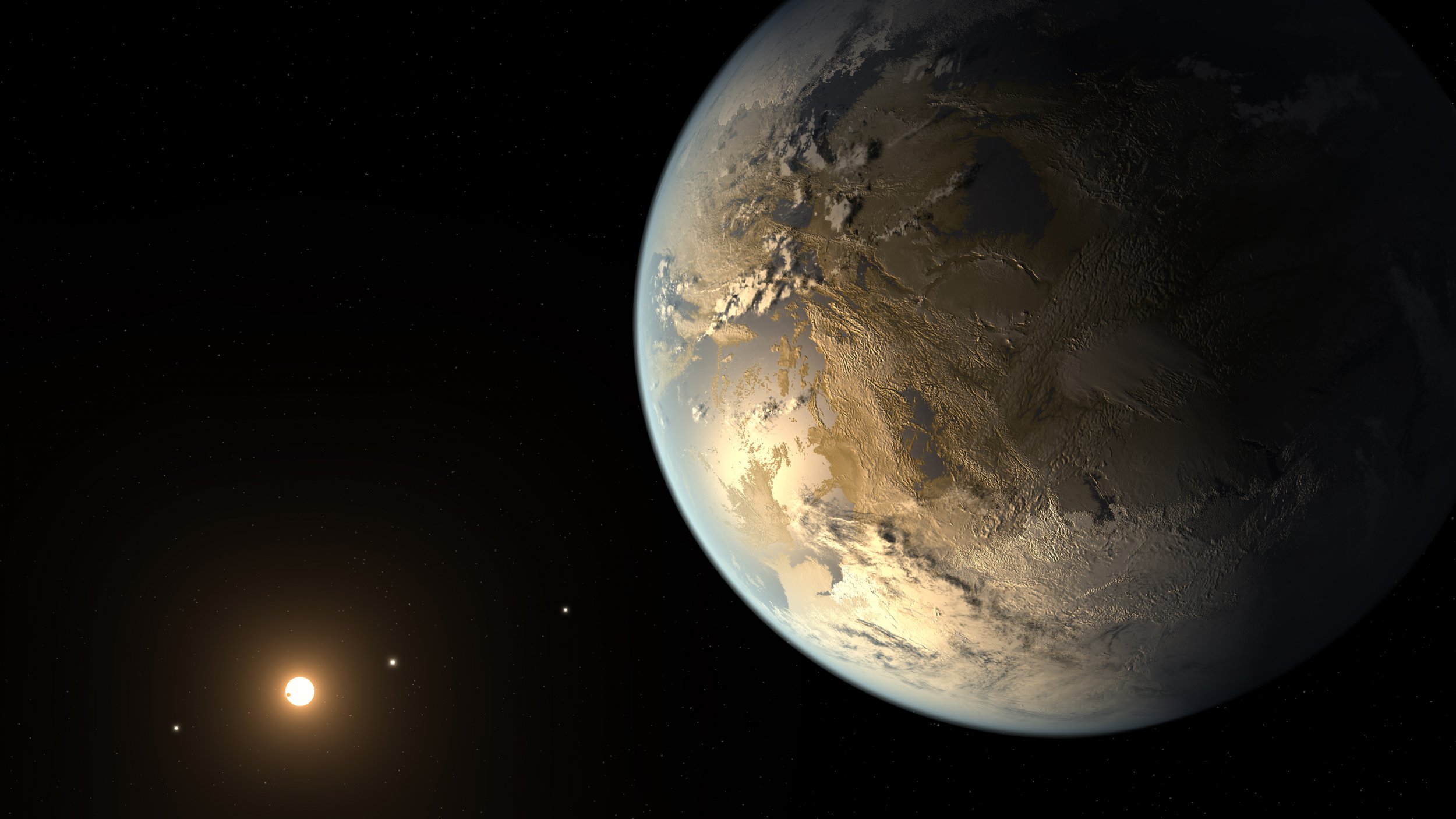
About 500 light years away, the fifth planet orbiting a small dim star called Kepler-186 has caught scientists' eyes as being not only roughly Earth-sized, but also within what's called the "habitable zone" that could support liquid water on the planet's surface.
The planet, called Kepler-186f, was discovered using NASA's Kepler spacecraft, which, like the Earth, is orbiting our sun. It stares at distant stars and looks for planets orbiting them by detecting the way those stars dim when a planet passes between that star and Kepler's eye. Kepler has observed this particular planet multiple times as it has transited in front of its star, and this has allowed scientists to measure its size and its orbital period, which is 130 days. The planet is just 10 percent bigger than Earth.
"The significance of this result is that even though Kepler has previously discovered planets the size of the Earth, and it has previously discovered planets that are in the habitable zone, this is the first time we've put the two of those together," Stephen Kane, an assistant professor of astrophysics at San Francisco State University and one of the researchers on this project, tells Newsweek. He's a co-author of a new paper in the journal Science announcing the results.
The planet is probably rocky and not made of gas, says Kane. While it isn't possible to literally see that there is water on the planet's surface, the conditions imply that it is "likely to have the properties required to maintain reservoirs of liquid water," as the Science article concludes.
More good news in the search for planets where the conditions are right for having liquid water is the fact that the kind of star this Earth-sized planet is orbiting, an M-dwarf star, is "the most common type of star in the universe—far more common than the sun," says Kane. "That's really great news for habitability." The implication is that if there can be an Earth-sized planet orbiting such a common kind of star and within the habitable zone, there might be more of these planets where the conditions are right for water.
Ravi Kopparapu, a planetary scientist at Pennsylvania State University, is an expert on the habitable zone and notes that Kepler-186f is similar to, but smaller than, a planet outside of our solar system called Kepler-62f, which is also terrestrial and in the habitable zone. But this new find is closer to Earth's size than that planet. (After a planet gets to be about 1.5 times the size of Earth is, its gravity attracts hydrogen and helium and makes it unlikely to have liquid water on its surface.) "I think it's pretty pretty cool that they found this planet," he says. "This shows that potential habitable planets are more common than our estimates."
Uncommon Knowledge
Newsweek is committed to challenging conventional wisdom and finding connections in the search for common ground.
Newsweek is committed to challenging conventional wisdom and finding connections in the search for common ground.
About the writer
Rob Verger is liaison to Newsweek’s foreign editions and also reports, writes, and edits. In addition to Newsweek and its ... Read more
To read how Newsweek uses AI as a newsroom tool, Click here.






